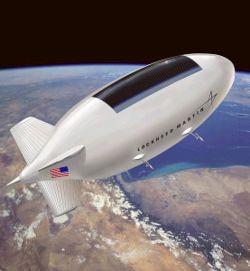Automated transport systems
| << Page in early stages >> |
|---|
 Main Page > Advanced automation > Automated infrastructure > Automated transport systems
Main Page > Advanced automation > Automated infrastructure > Automated transport systems
If the national or global infrastructure is to be automated, there obviously needs to be automated transportation. Taking ore from mines to smelting plants, taking processed materials such as machine parts to manufacturing plants, and taking goods and products to their destinations - such haulage is laborious and unstimulating work and it is desirable to use technology to free us from such tasks.
Then there is the issue of transporting people. Cars currently are very inefficient in terms of energy per passenger, they harm to plant, lead to inefficient land-use in our cities and they are also extremely dangerous. Due to its everyday nature, we sweep under the carpet how risky driving really is. The annual global death toll in road accidents is an amazing 1.2 million people per year and 15 million serious injuries (source: [1] & [2]). This is the equivalent of Auckland, the most populous city in New Zealand, being nuked each year in terms of death, and every man woman and child in New York and Hong Kong being severely injured every single year.
Trains are one of the most efficient forms of transport in terms of energy per unit weight moved. They are also the easiest to automate, with some already being so, such as the Docklands Light Railway  in London.
in London.
Non-human transport systems and pipelines. Materials / cargo / delivery.
One promising technology for moving freight around the world would be to create lighter-than-air, solar-powered, high-altitude, high-speed airships. At least one design for such a craft has already been worked out.
The craft is filled with helium, making it lighter than air and allowing it to rise into the sky without using energy. It is designed to fly at a height of nearly 11000m. At this altitude, air is thinner, so less air-resistance is offered to the unaerodynamic bulbous airship moving through the sky. The large top of the airship is covered with solar panels and because it flies above all cloud-cover and above 11km of air that blocks the sun's energy, it is able to access abundant solar energy, regardless of the weather. It can fly day and night at speeds of about 200km/h.
As noted above, trains are one of the most energy-efficient means of moving people and freight from A to B. What energy is lost is mostly due to the friction between the wheels and and the track, and the friction between the train and the air (i.e. air resistance). Magnetic levitation (MagLev) trains solve the first of these; they have no friction between the trains and the tracks because the train does not touch the track. Instead it hovers above it due to electromagnetic repulsion between the two. MagLev trains are therefore much more efficient and capable of greater speeds than ordinary trains. MagLev trains have been in use for decades. The second energy-drain, air resistance, can be eliminated by housing the MagLev train in a vacuum. This is called vacuum-enhanced magnetic levitation (or VacMagLev, or VacTrain technology, or evacuated tube transport) and was pioneered by Gerard O'Neill, who said that VacMagLev would allow goods to travel "from New York to Orlando in half an hour... [using] less energy than... a liter of gasoline"[3].
Of all the new transport-technology options on the menu for 21st century man, VacMagLev is outstanding for its speed, its energy-efficiency and the ease of automation. One proposal by Daniel Wade outlines how such technology could be used to move goods of any kind around the world at an incredible 3200km/h (2000mph) with minimal energy. The most ambitious designs envision speeds of up to 8000km/h (5000mph). To put this in perspective, this is about ten times the cruising speed of a commercial jet aeroplane and would mean travelling from New York to Los Angeles in about 35 minutes. A network of such pipes could be set up between the world's cities, allowing goods to be moved from anywhere to anywhere in a few hours. Some proposals see this as a means of transporting people, a much faster and more efficient alternative to flying. Other designs have narrower tubes used for moving goods around.
To build such a system would require considerable initial investment. One optimistic estimate puts the cost of building a vacuum-enhanced maglev system at $2 million per mile of track ($1.25m / km) [4] for a tube big enough to carry people. It is possible that automated construction methods would allow track to be extruded cheaply by machines.
The running costs, however, would be much lower than air travel and this would justify the initial effort of construction. This is true even if we consider only the financial savings, not to mention the reduced environmental impact and the energy and time saved. It takes at least 3 liters of kerosene to move each passenger one kilometer by plane (p. 12)[5], so fuel costs are over $2.50 per passenger per kilometer[6]. By contrast, the energy requirements of VacMagLev are tiny and could easily be met by solar panels on the tubes, allowing the system to run at zero fuel cost. If 500,000 passengers are transported, the fuel savings equal the cost of construction ($1.25m / km). For the world's 50 busiest air routes  , this number would be met in just the first two months of operation.
, this number would be met in just the first two months of operation.
In July 2013, the VacMagLev concept was reawakend by Elon Musk with a design he calls the Hyperloop  .
.

